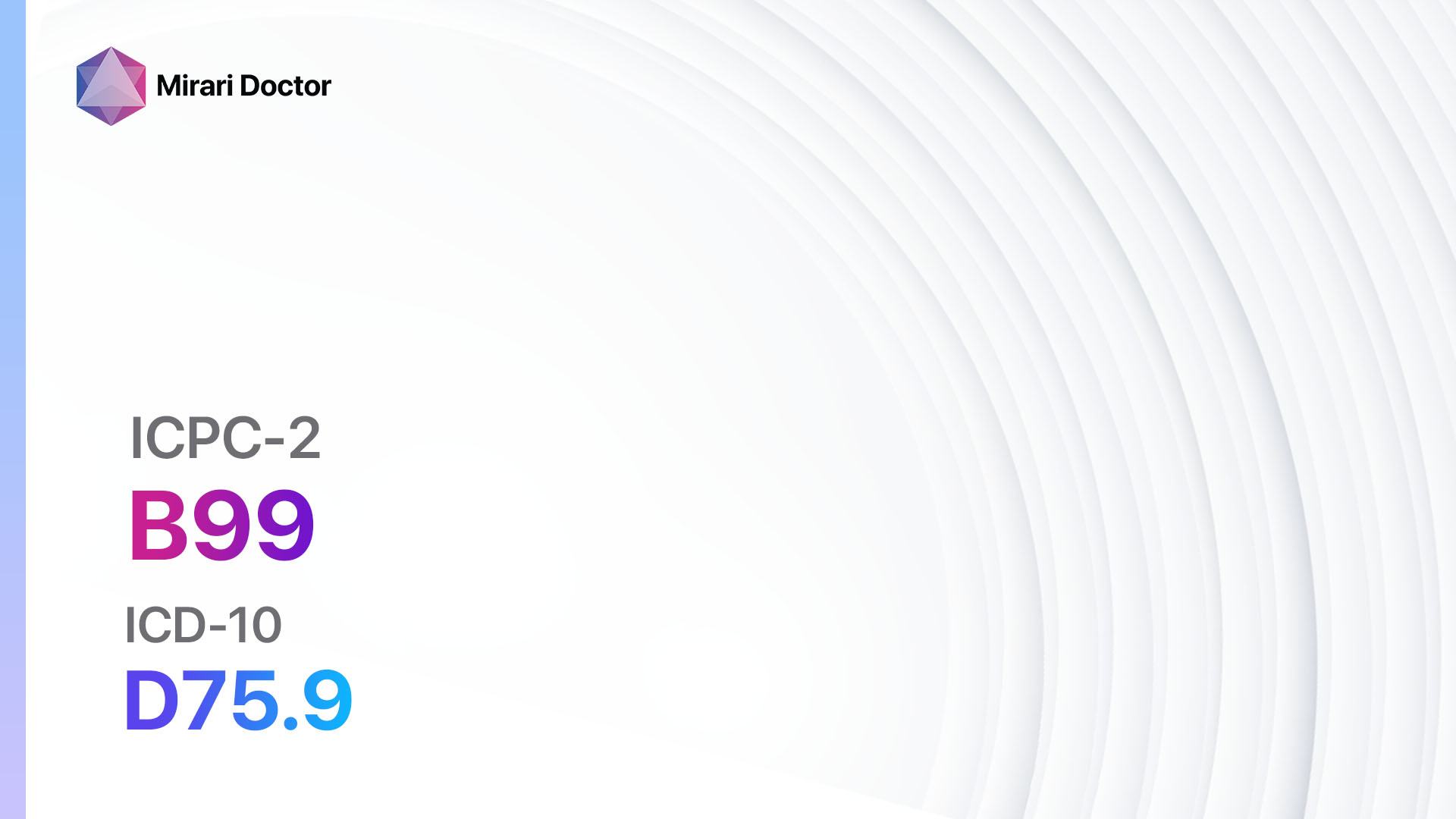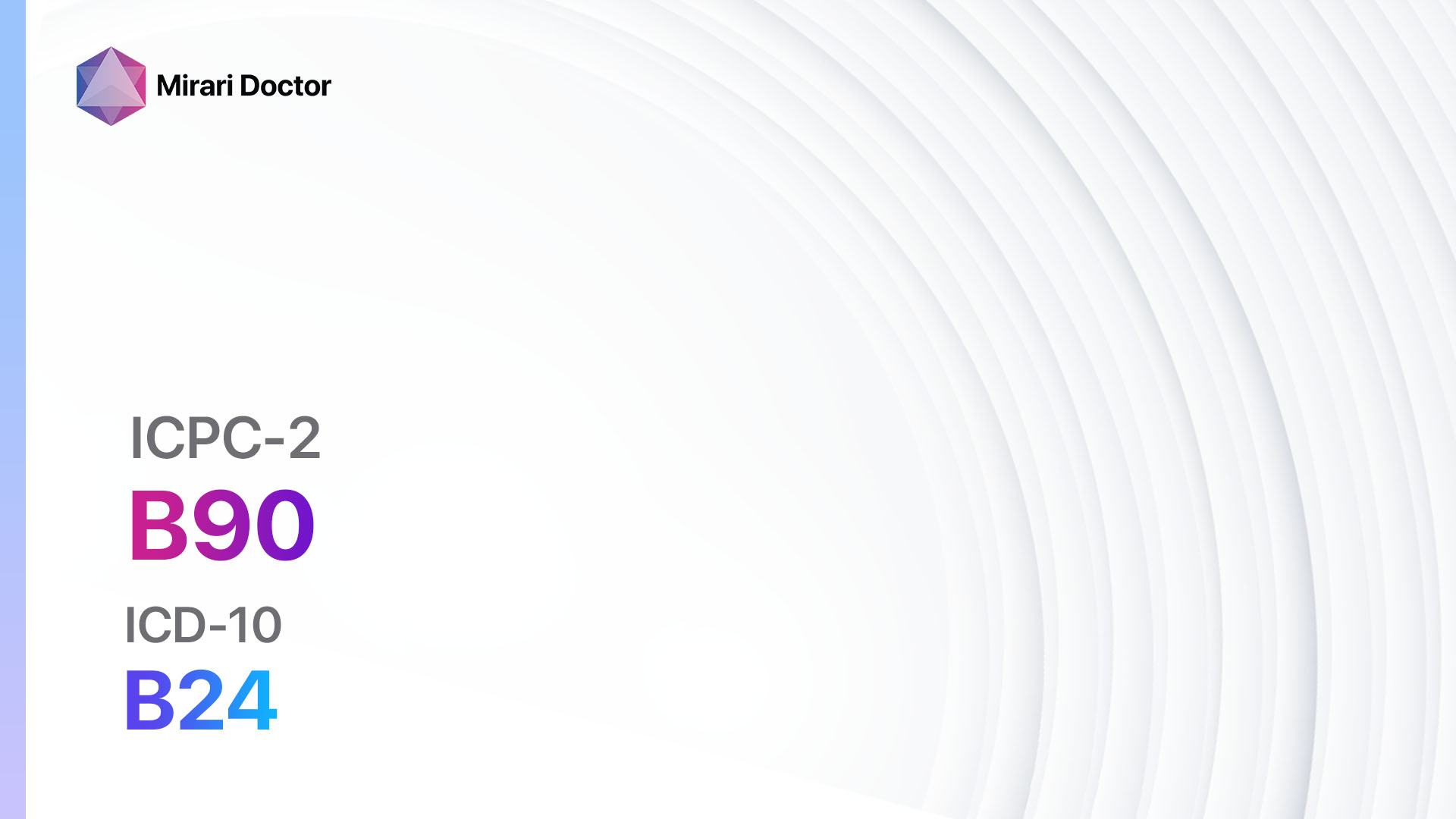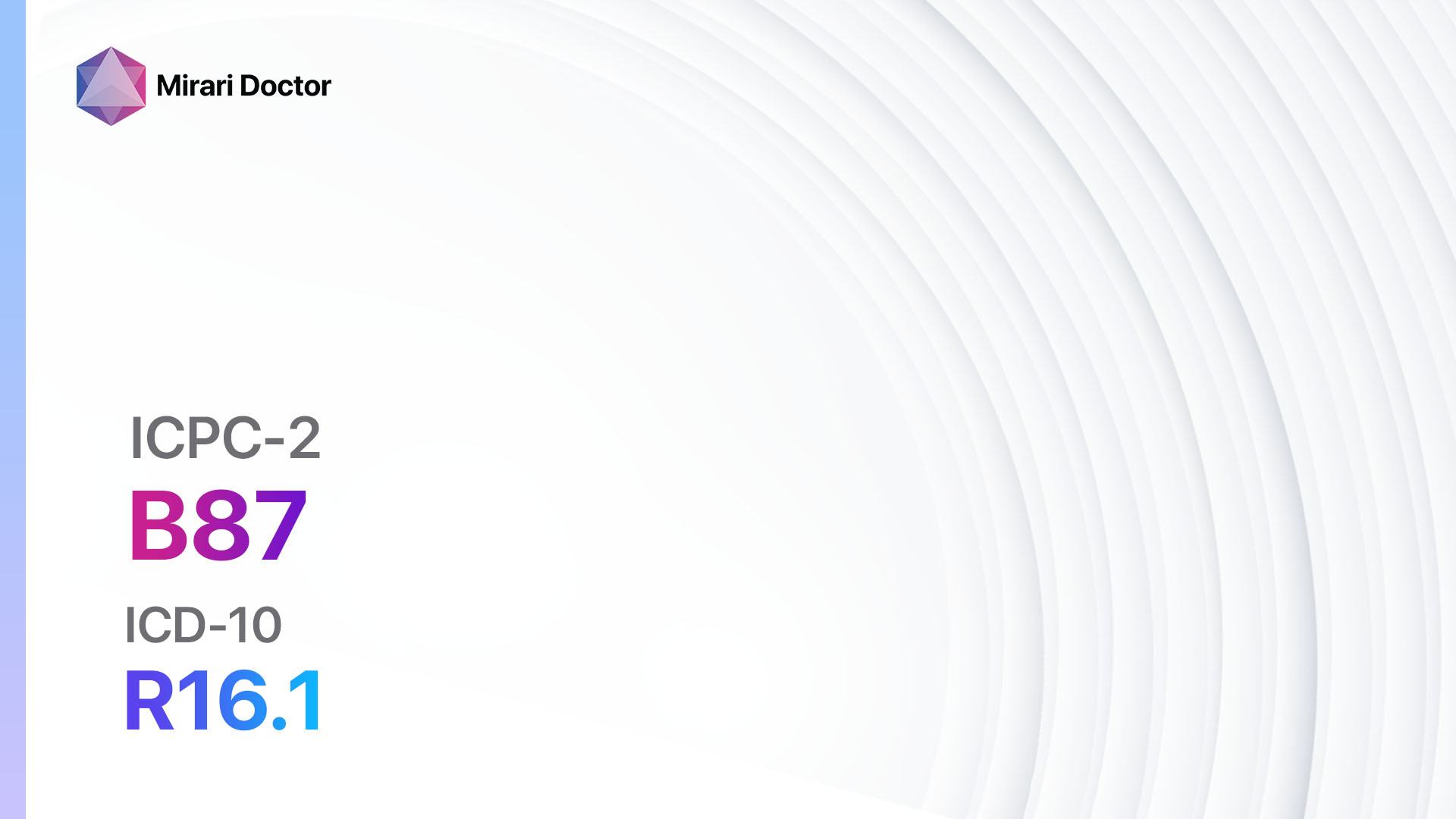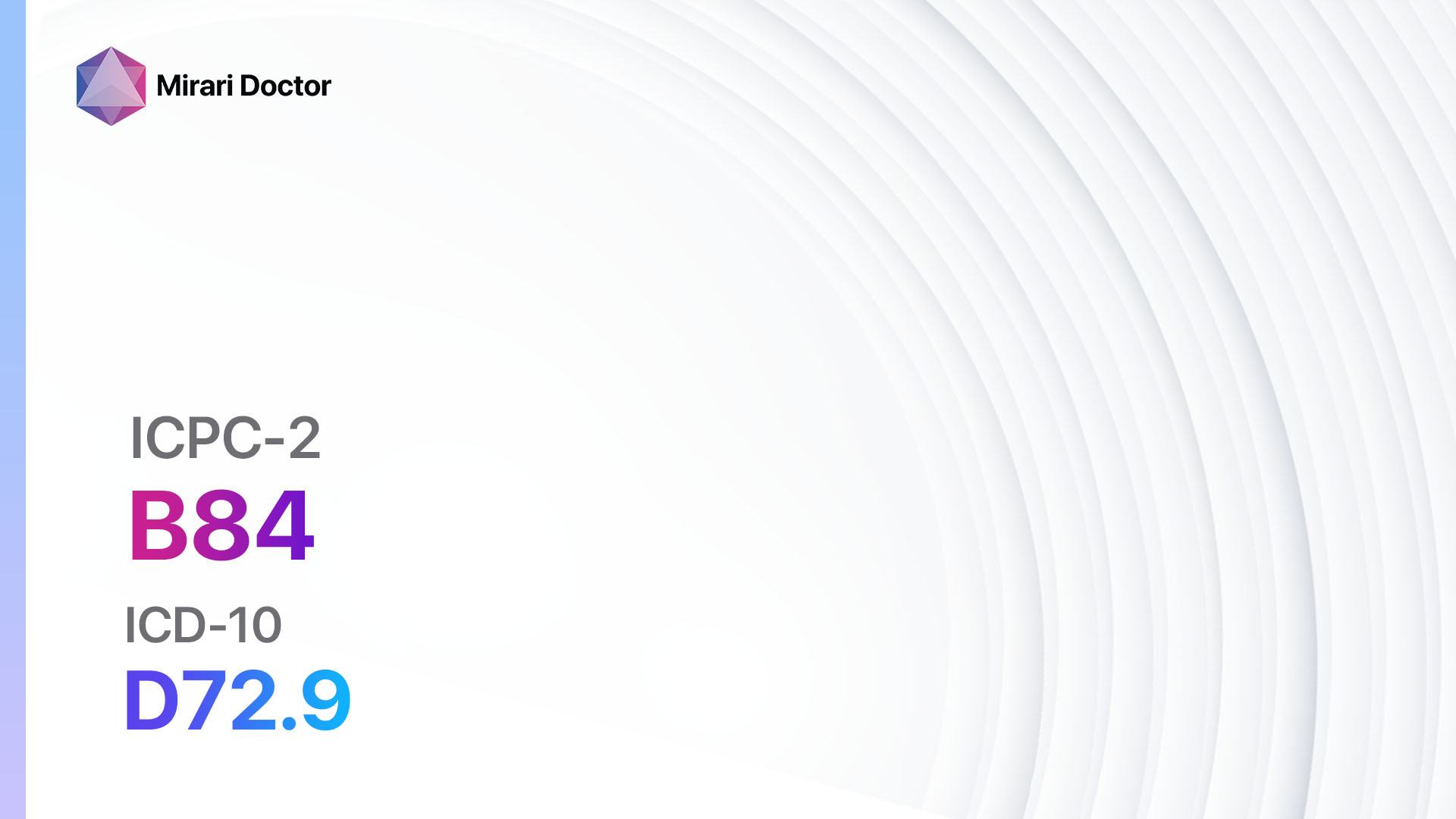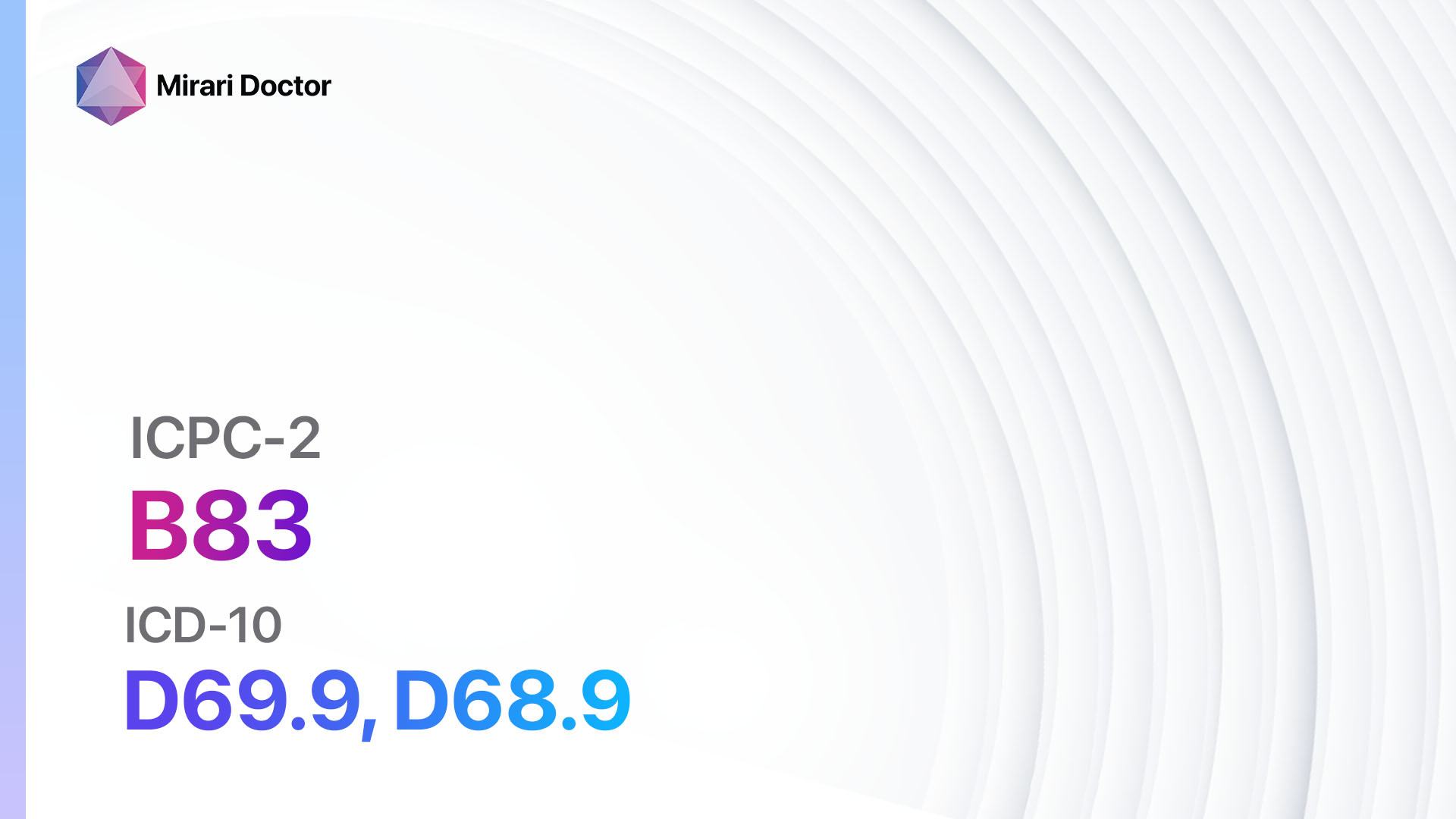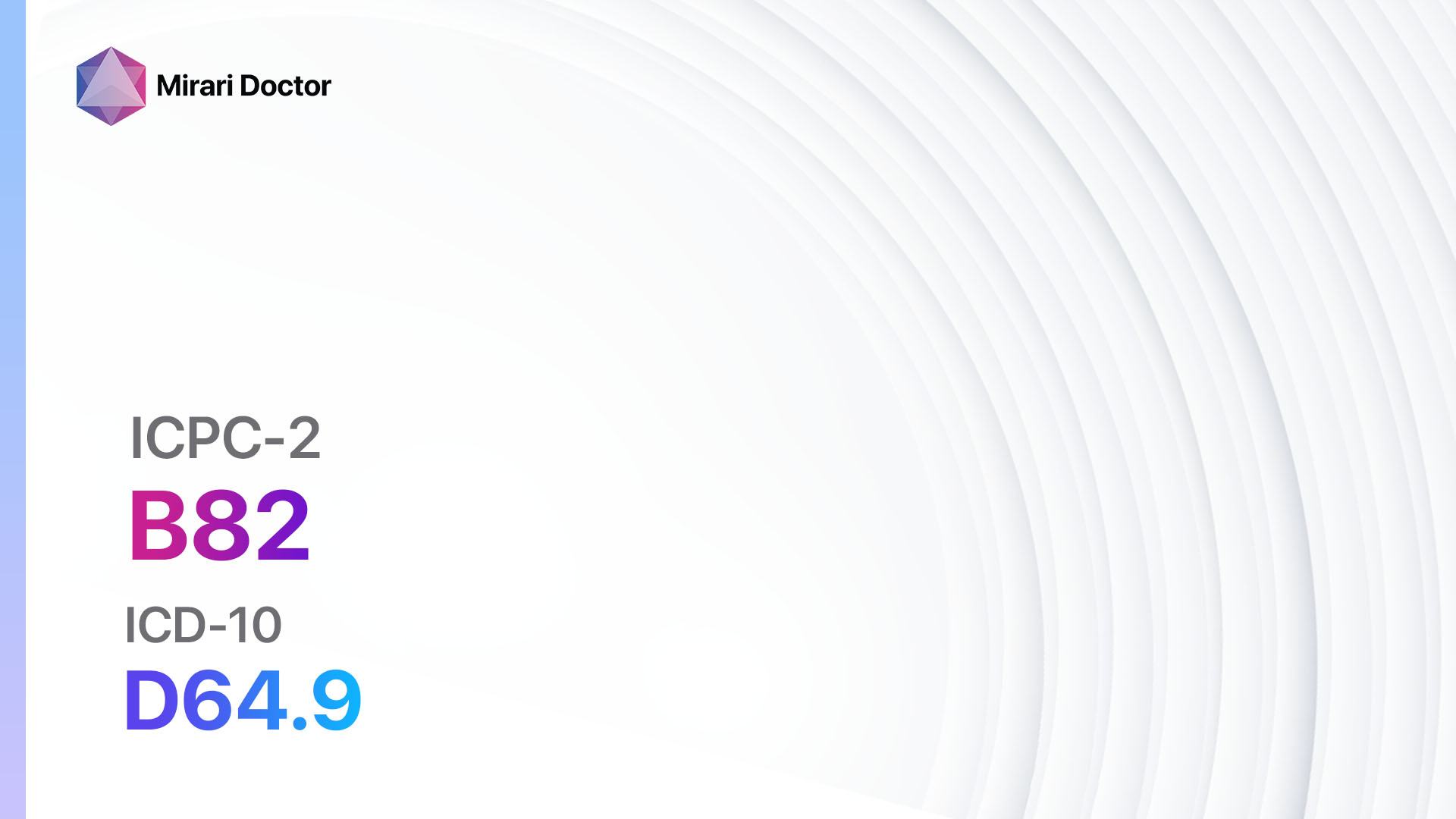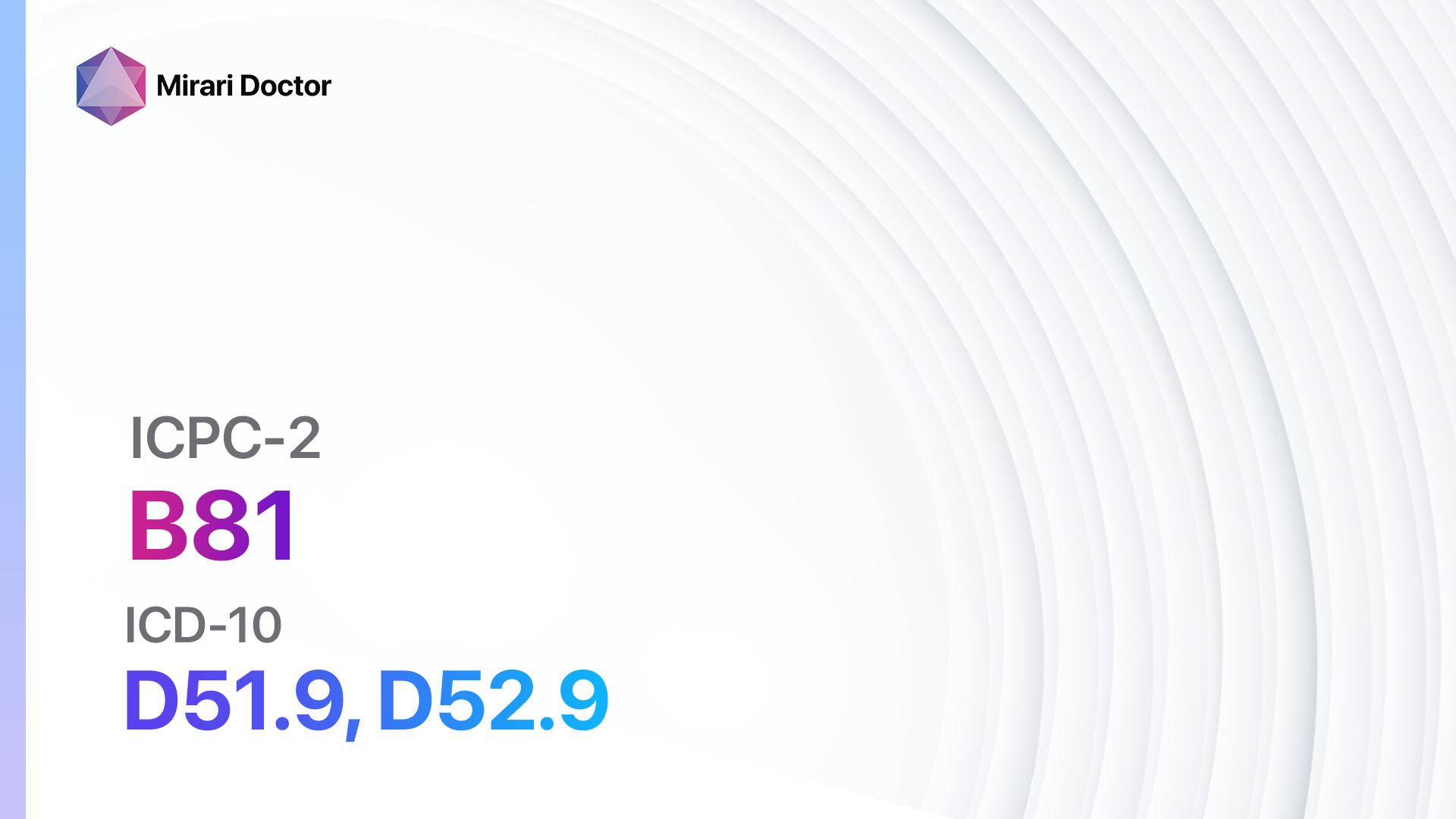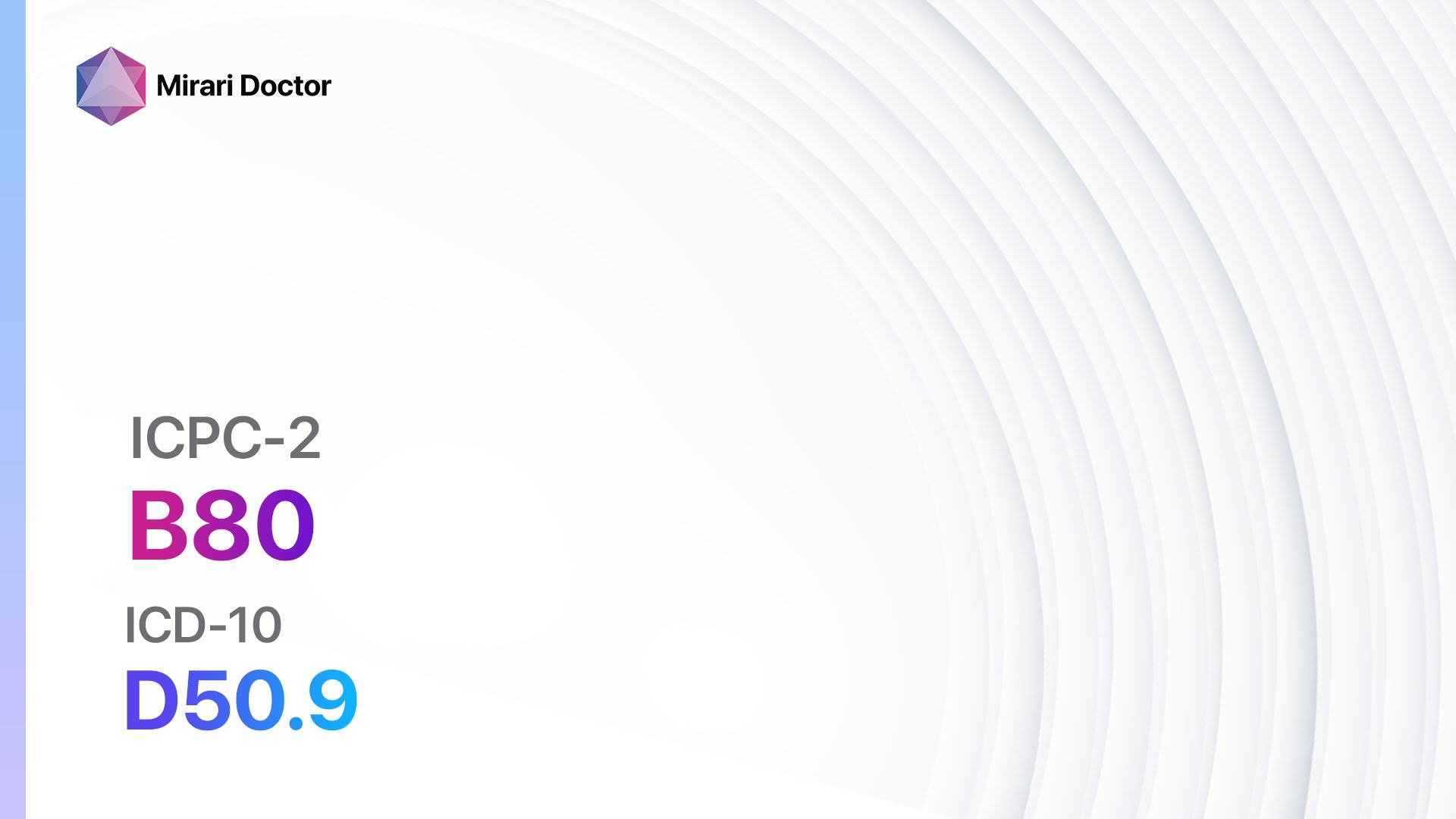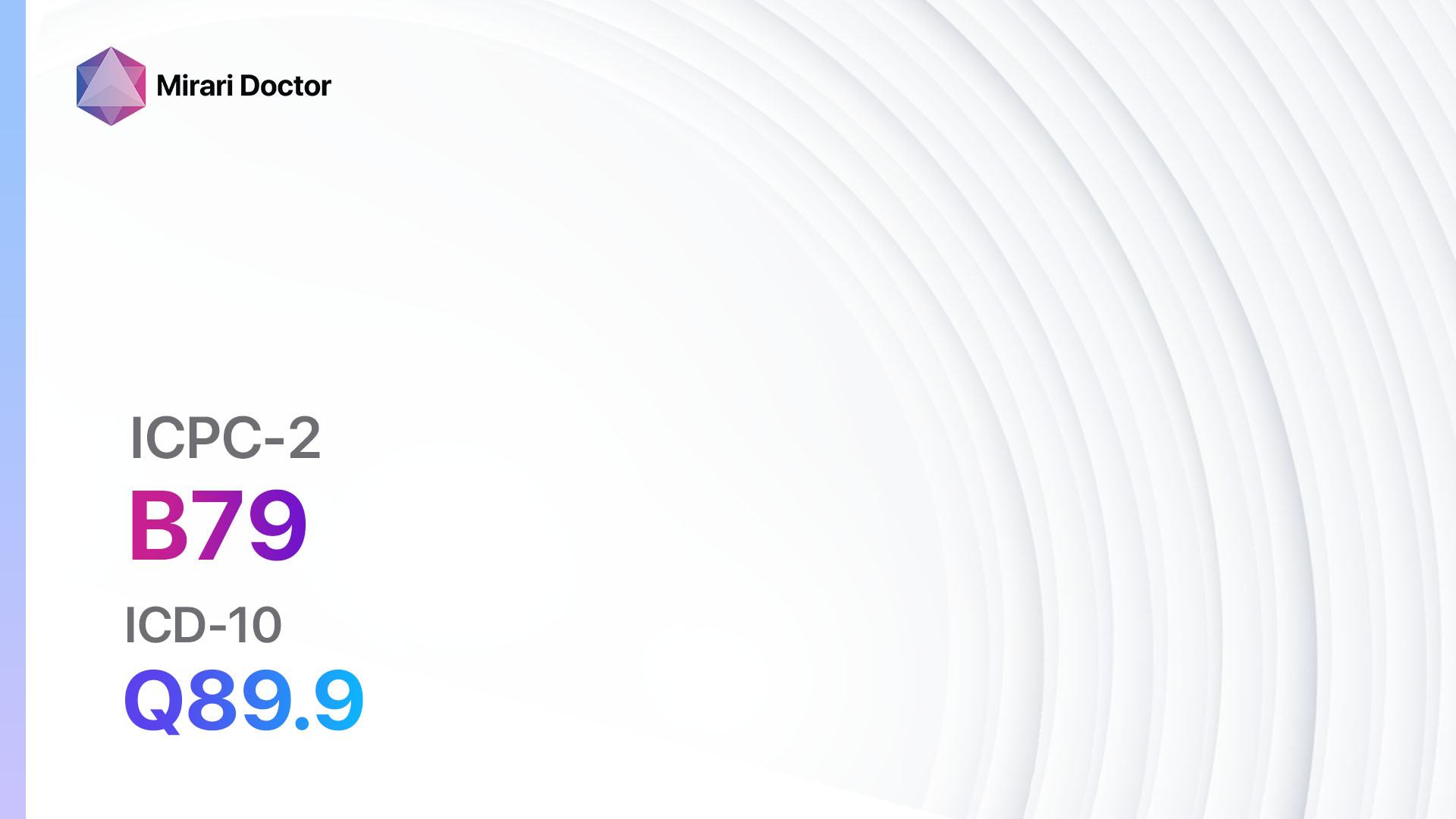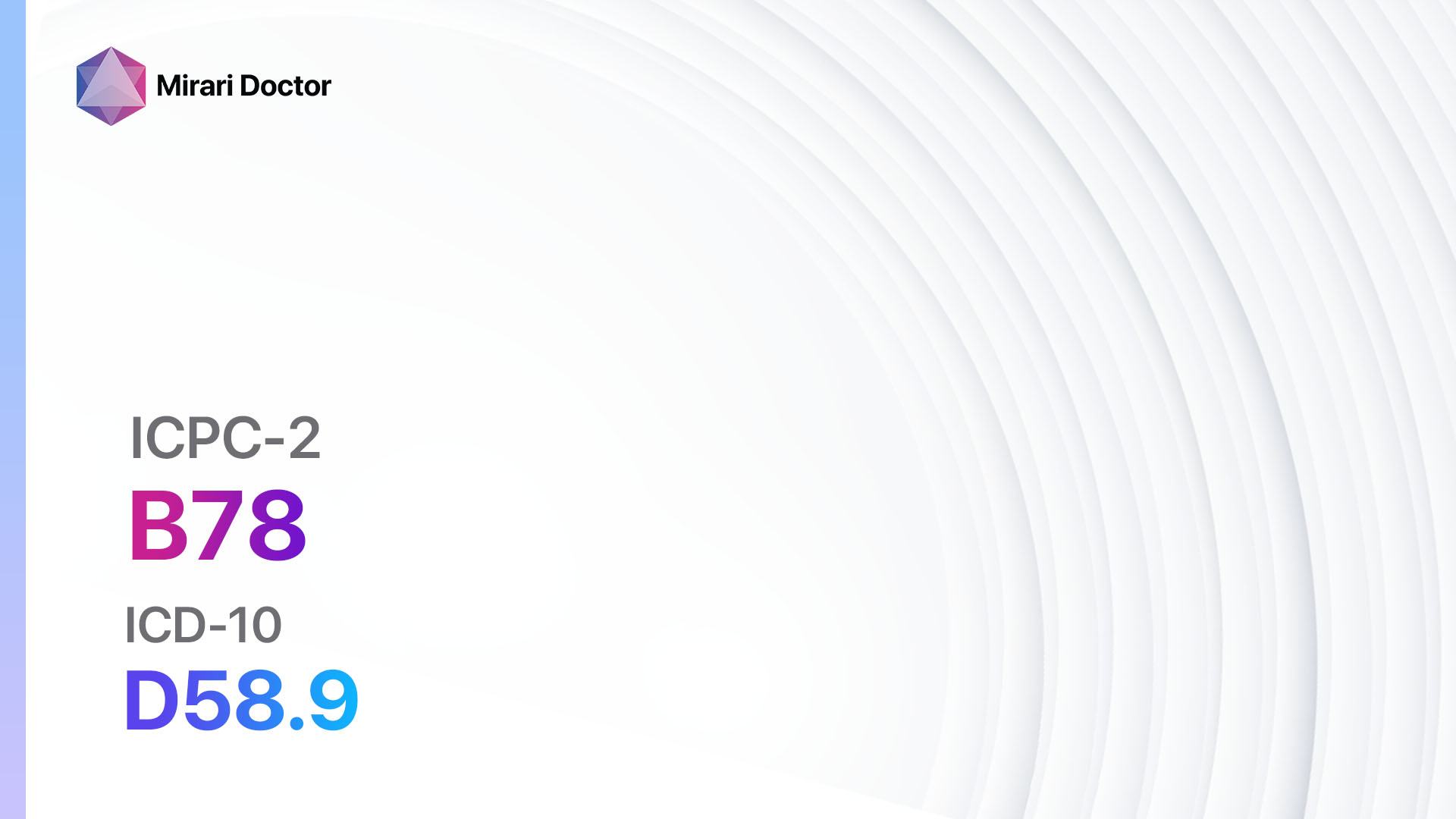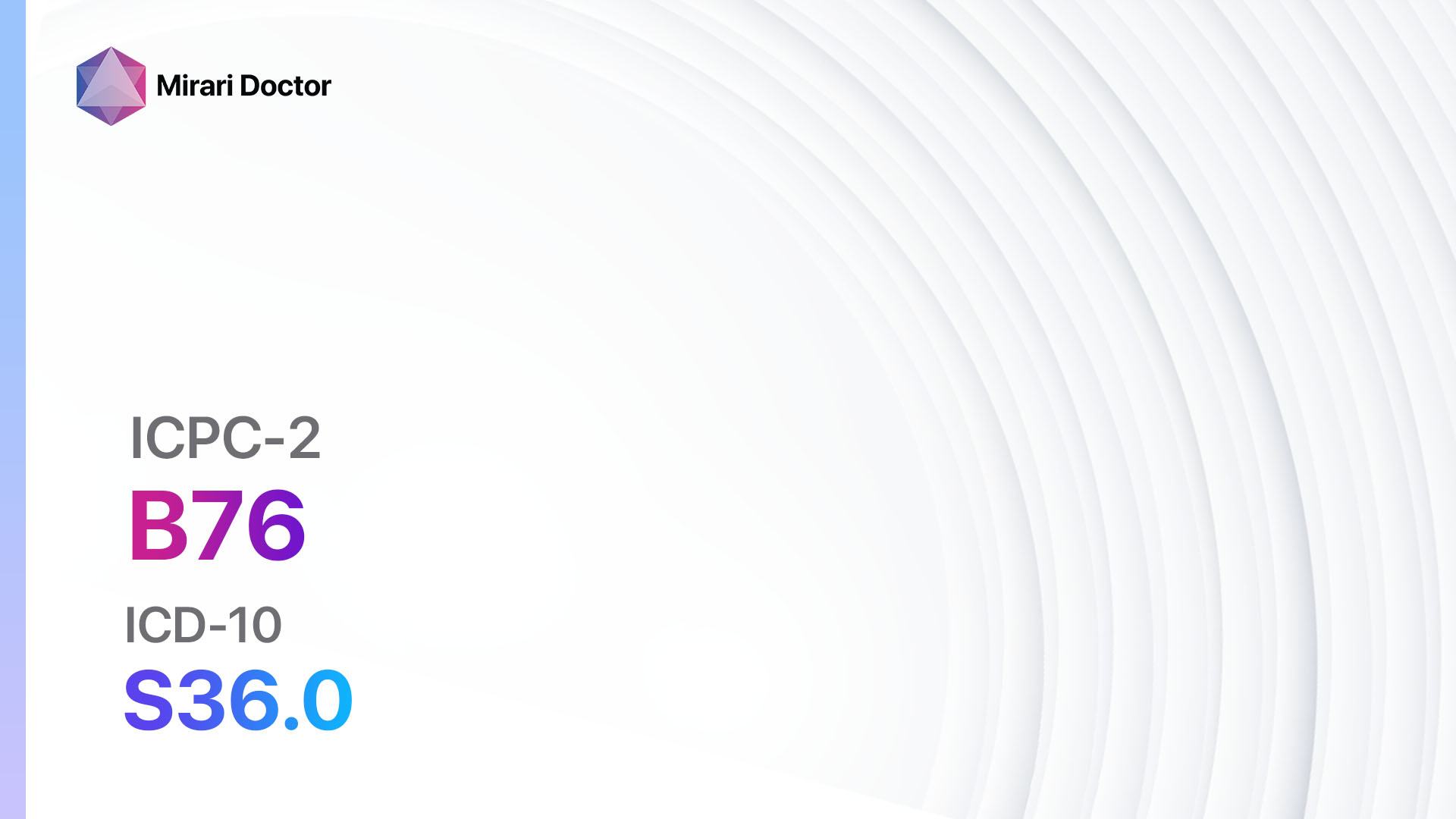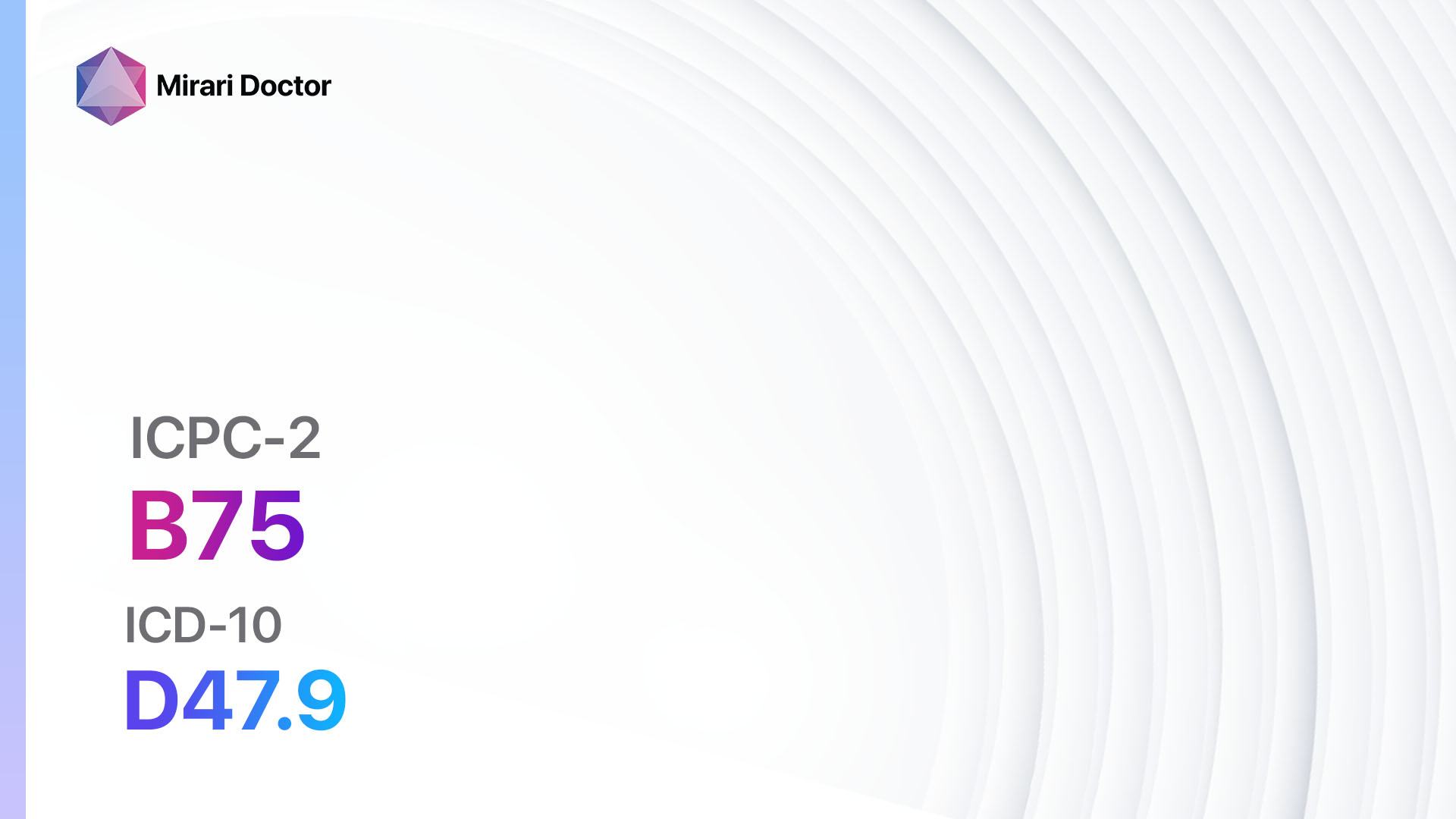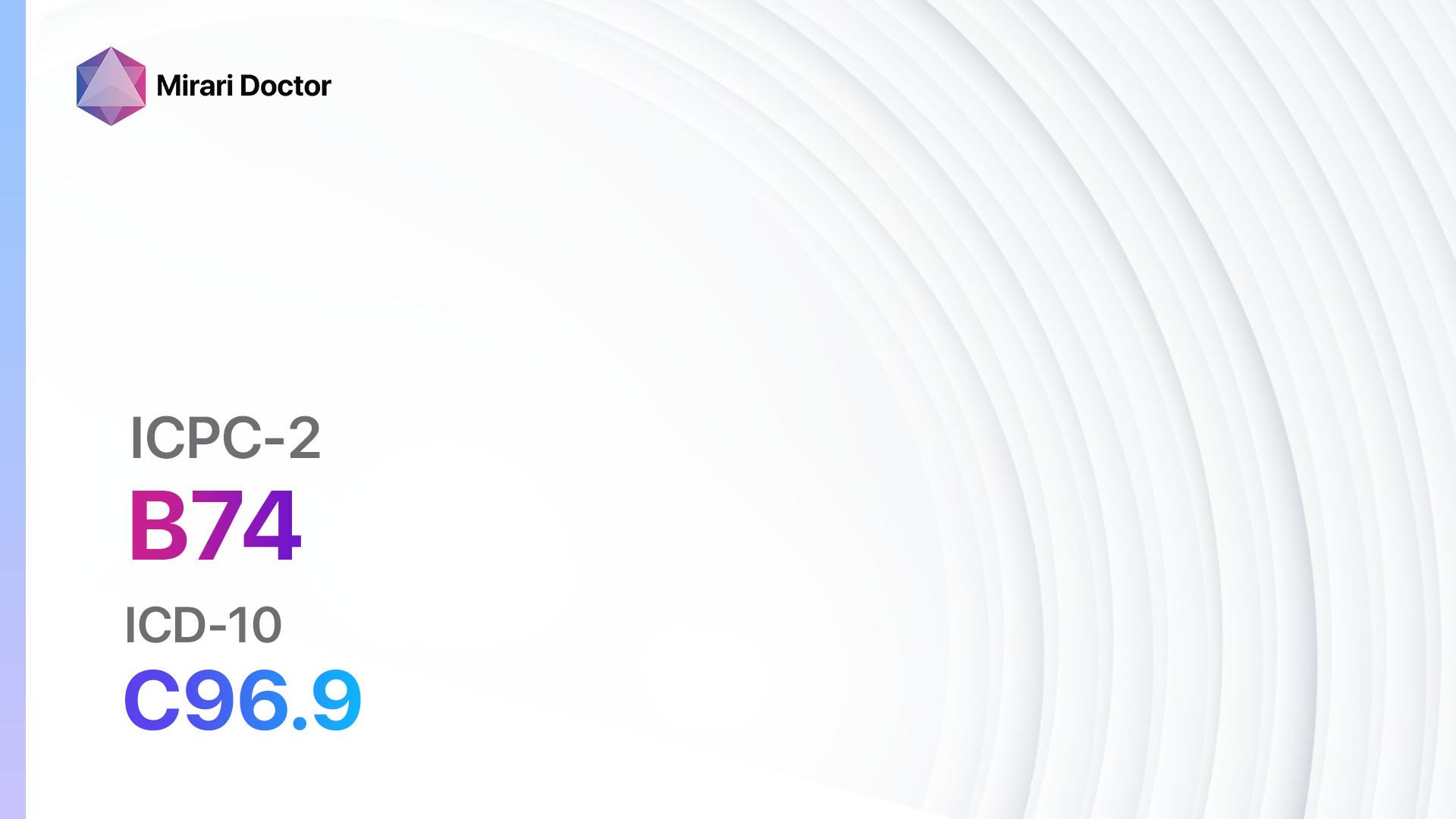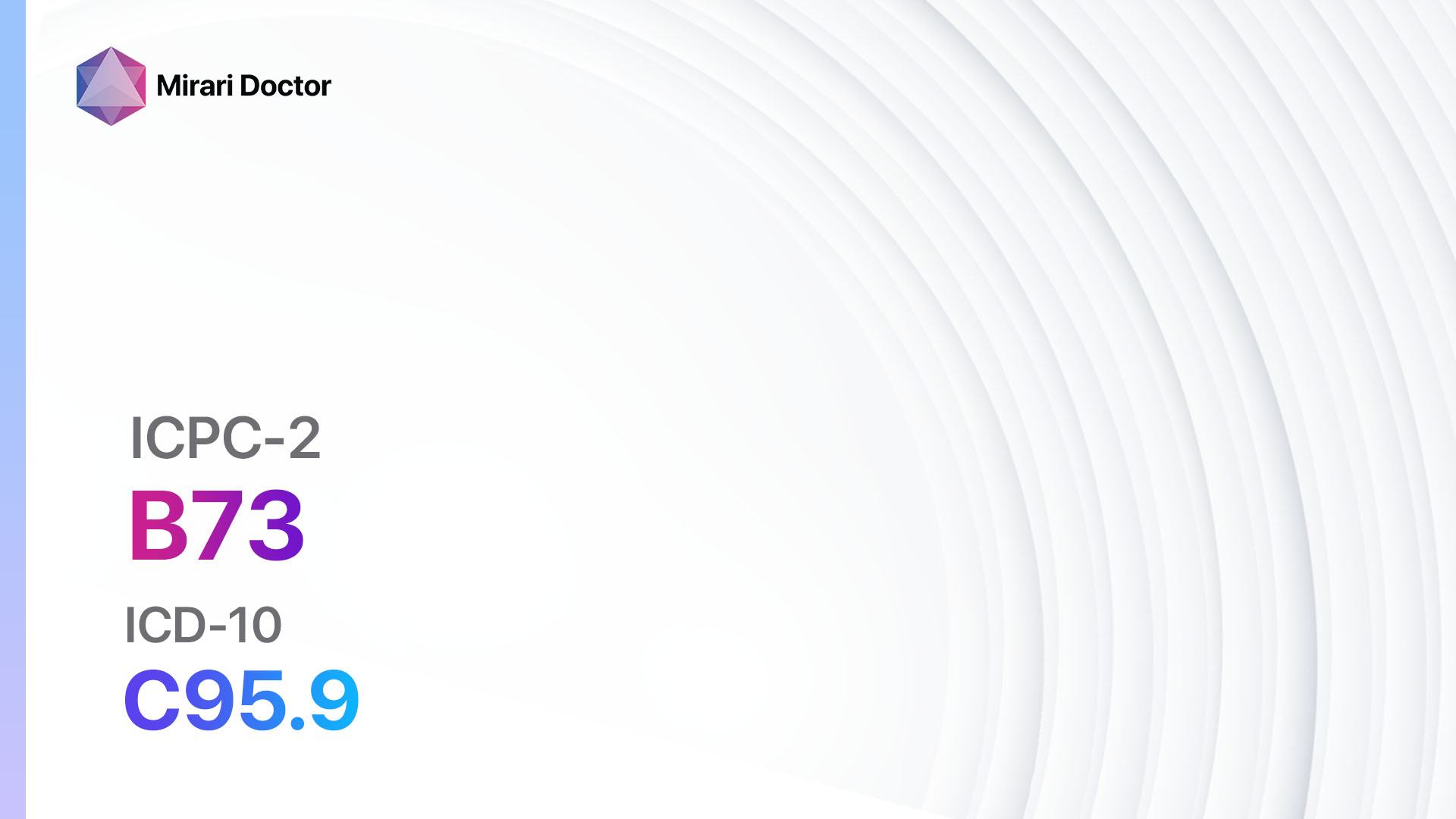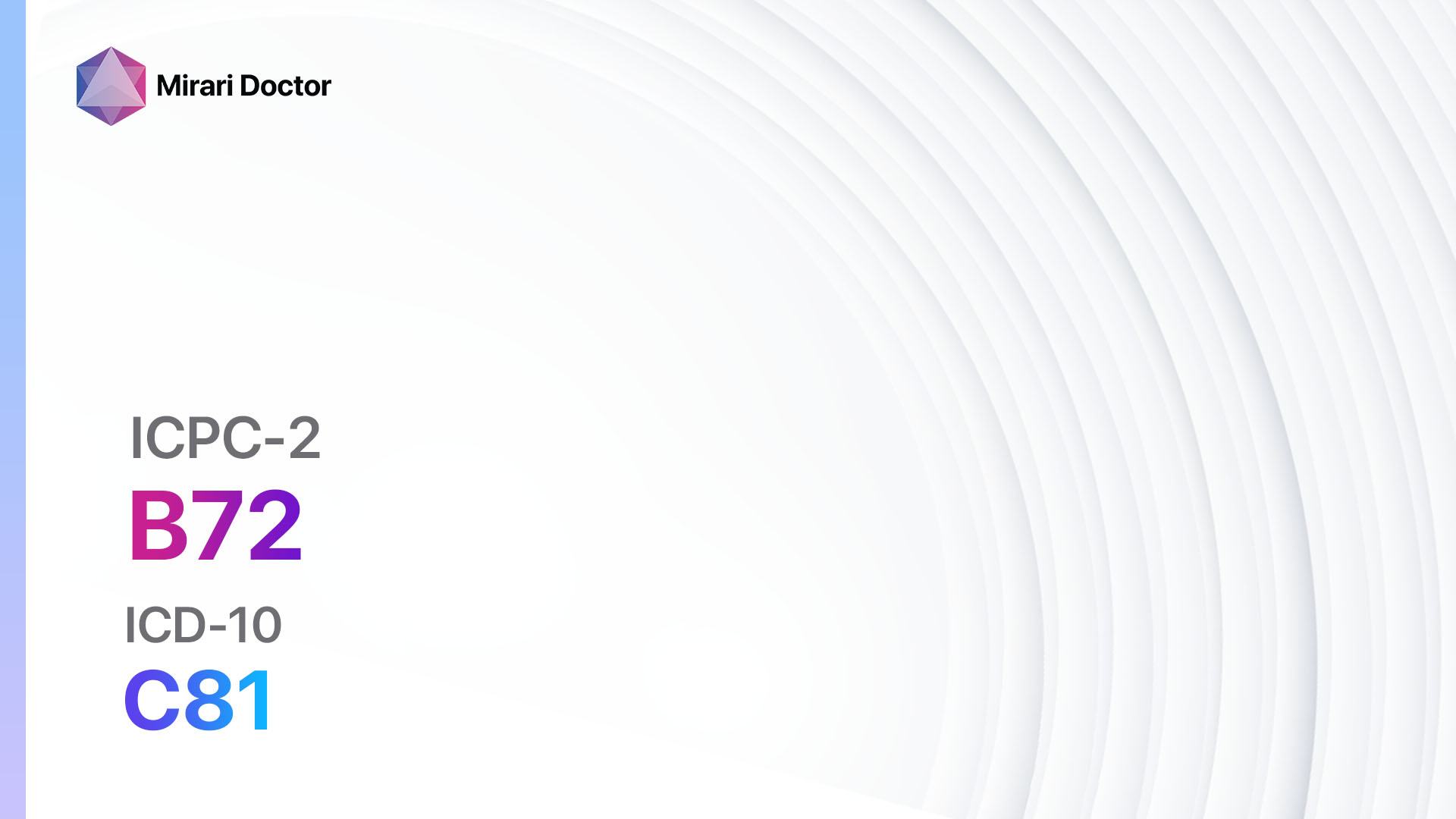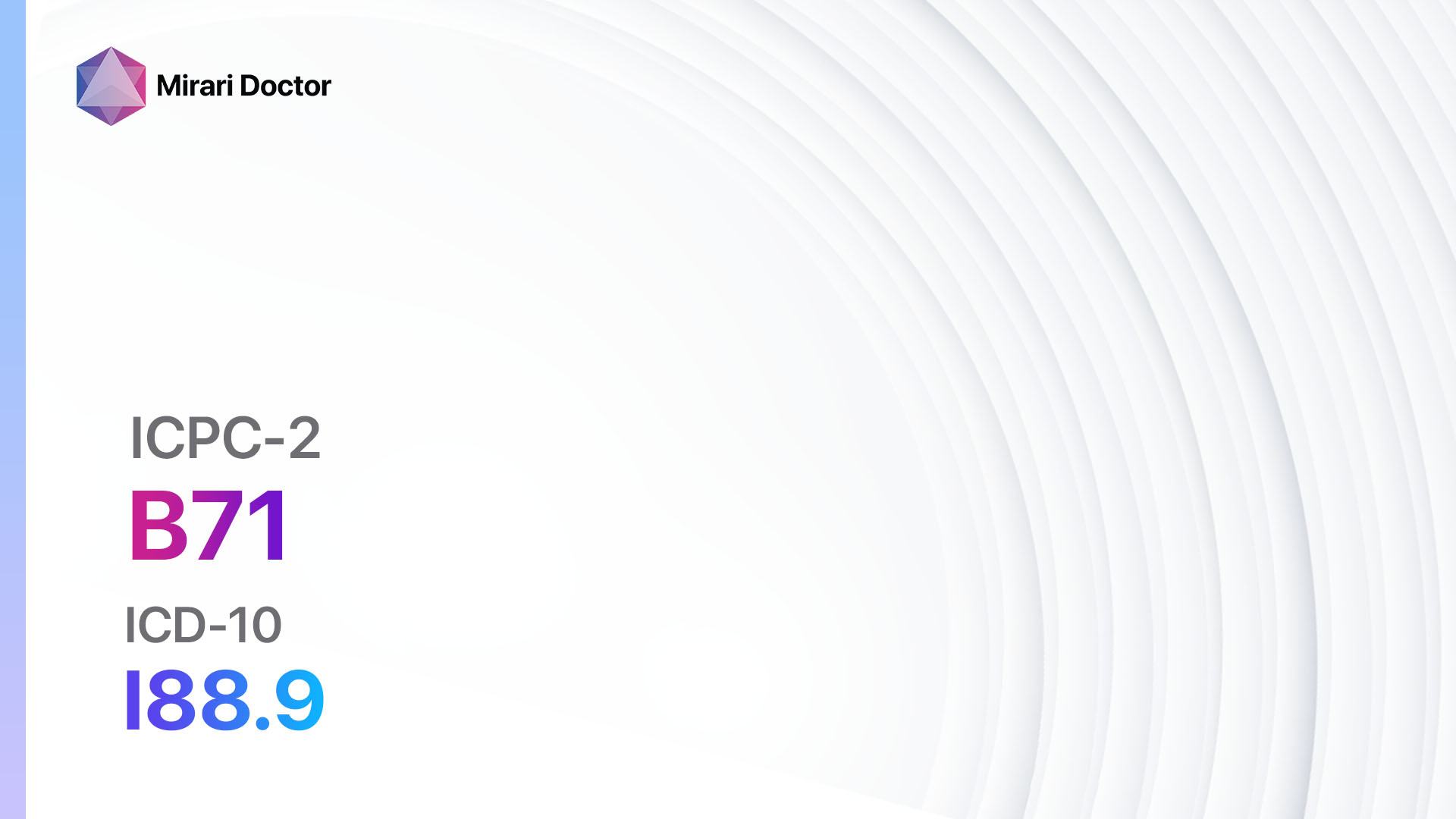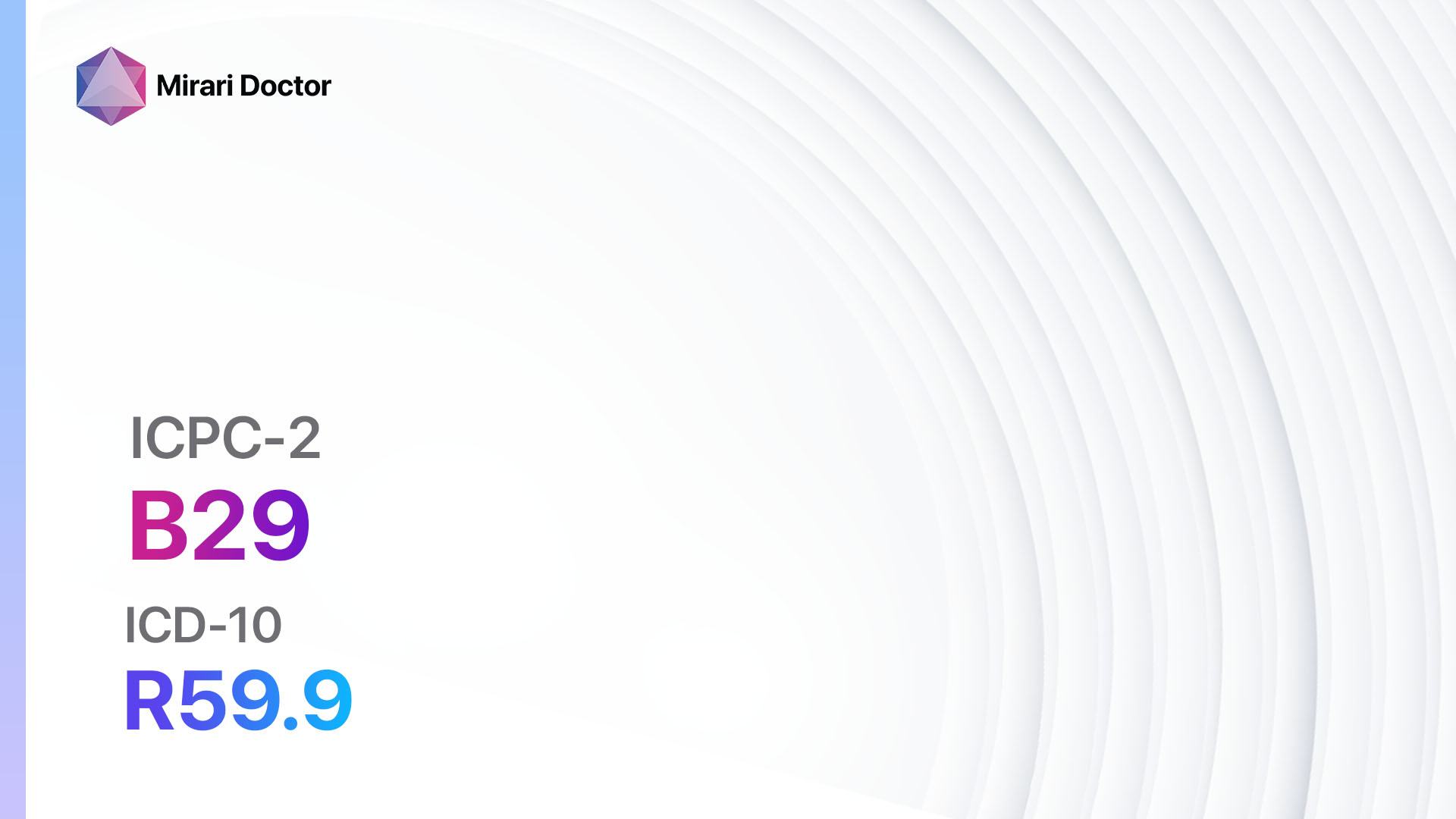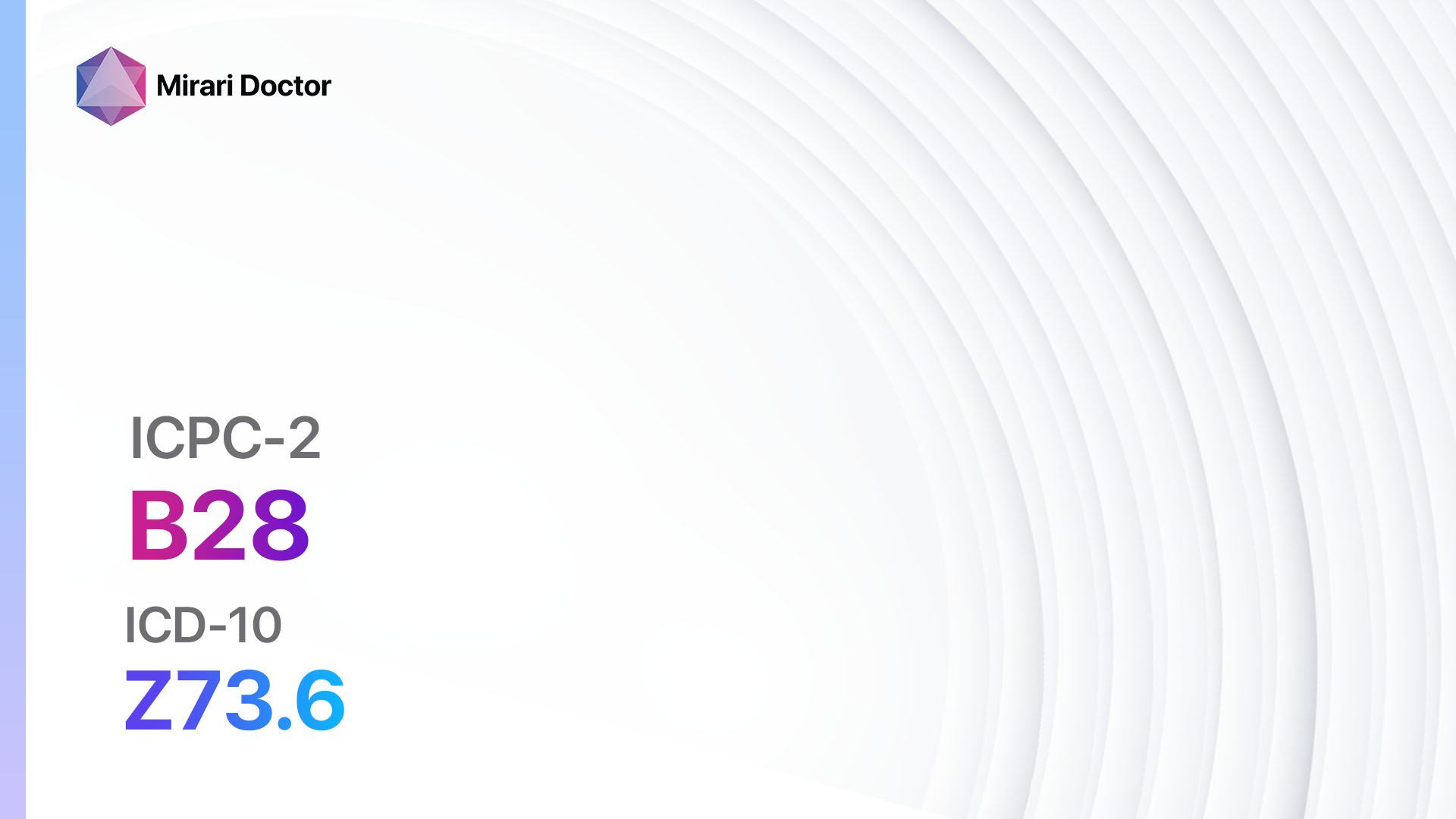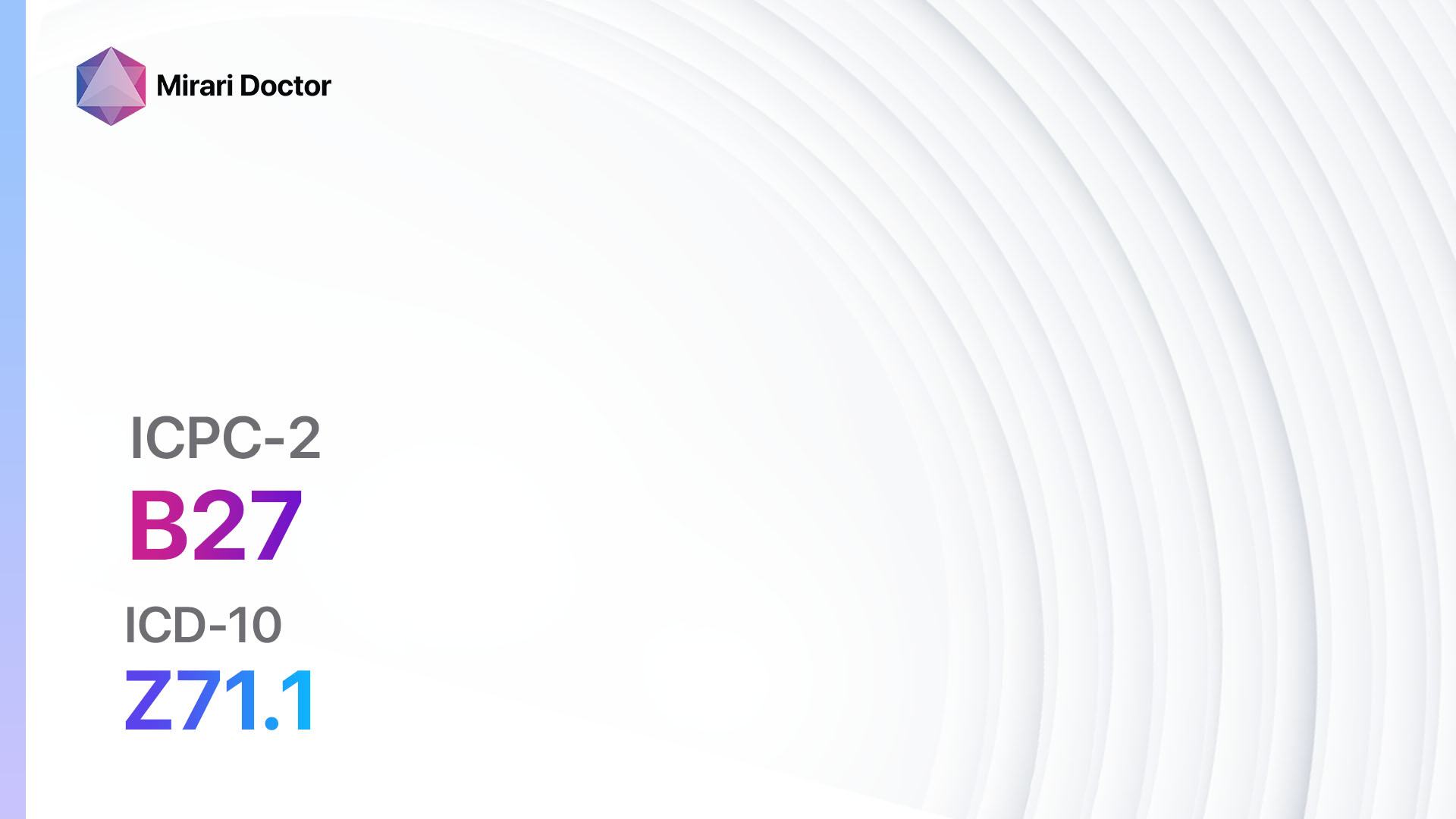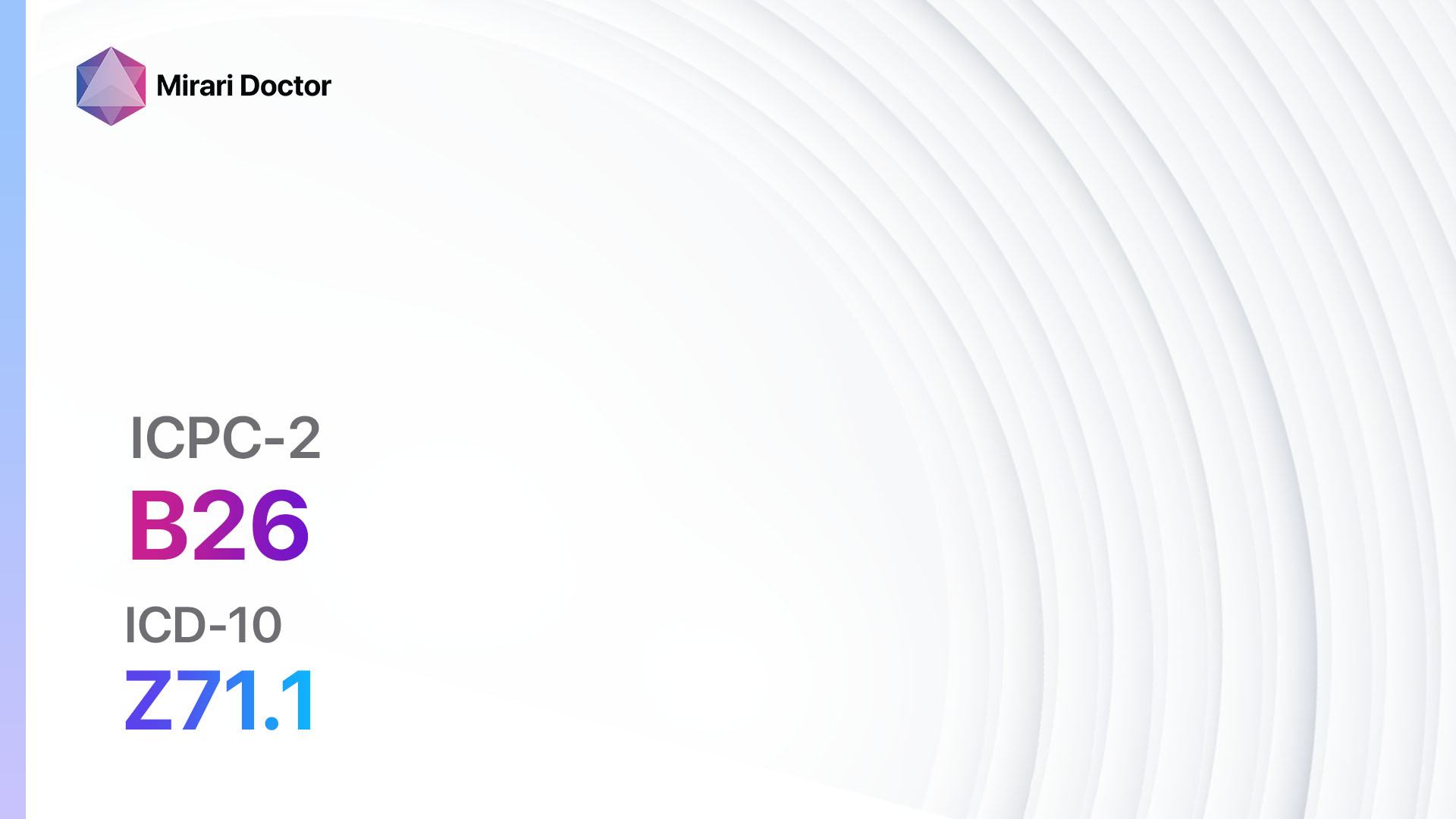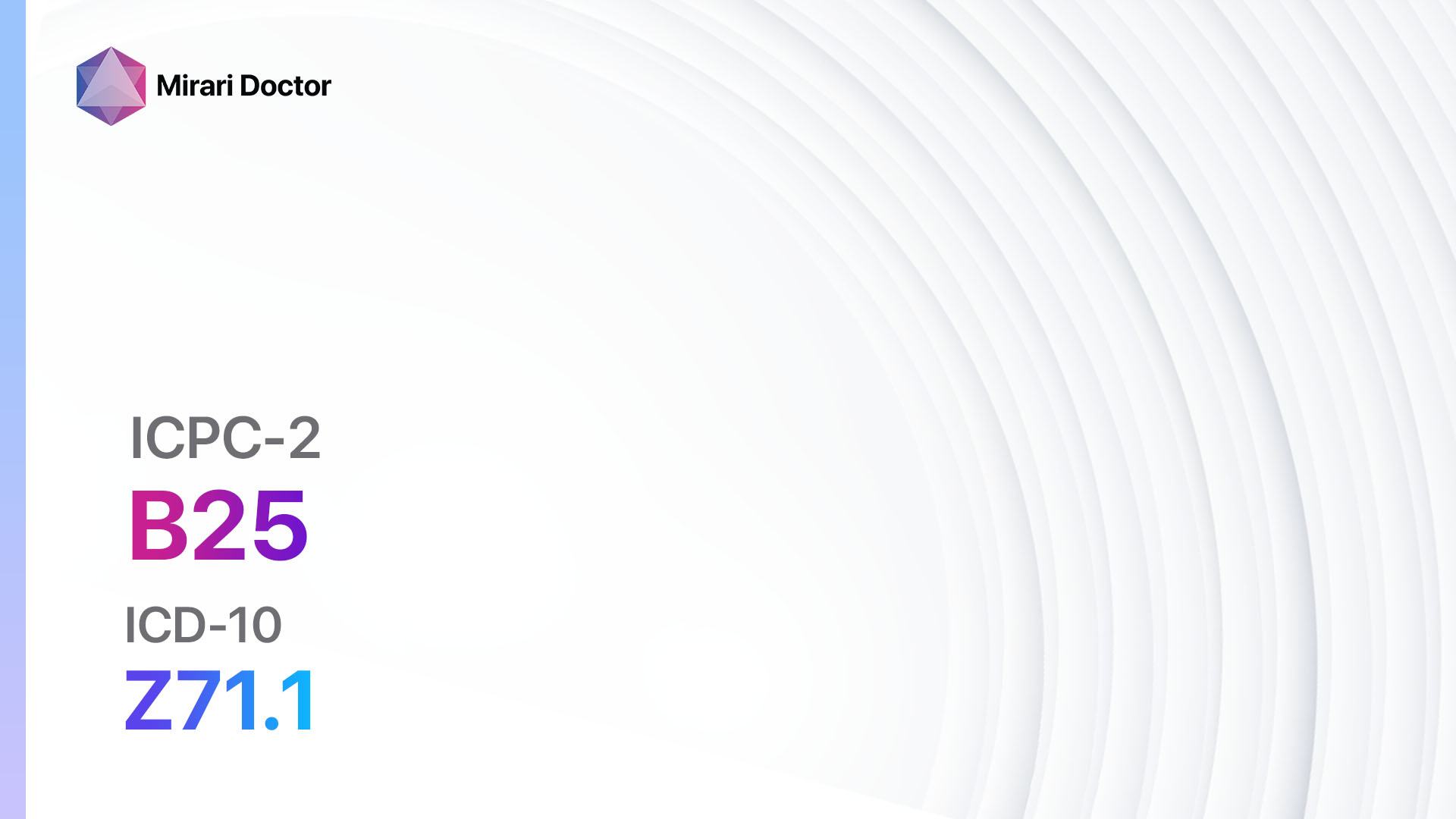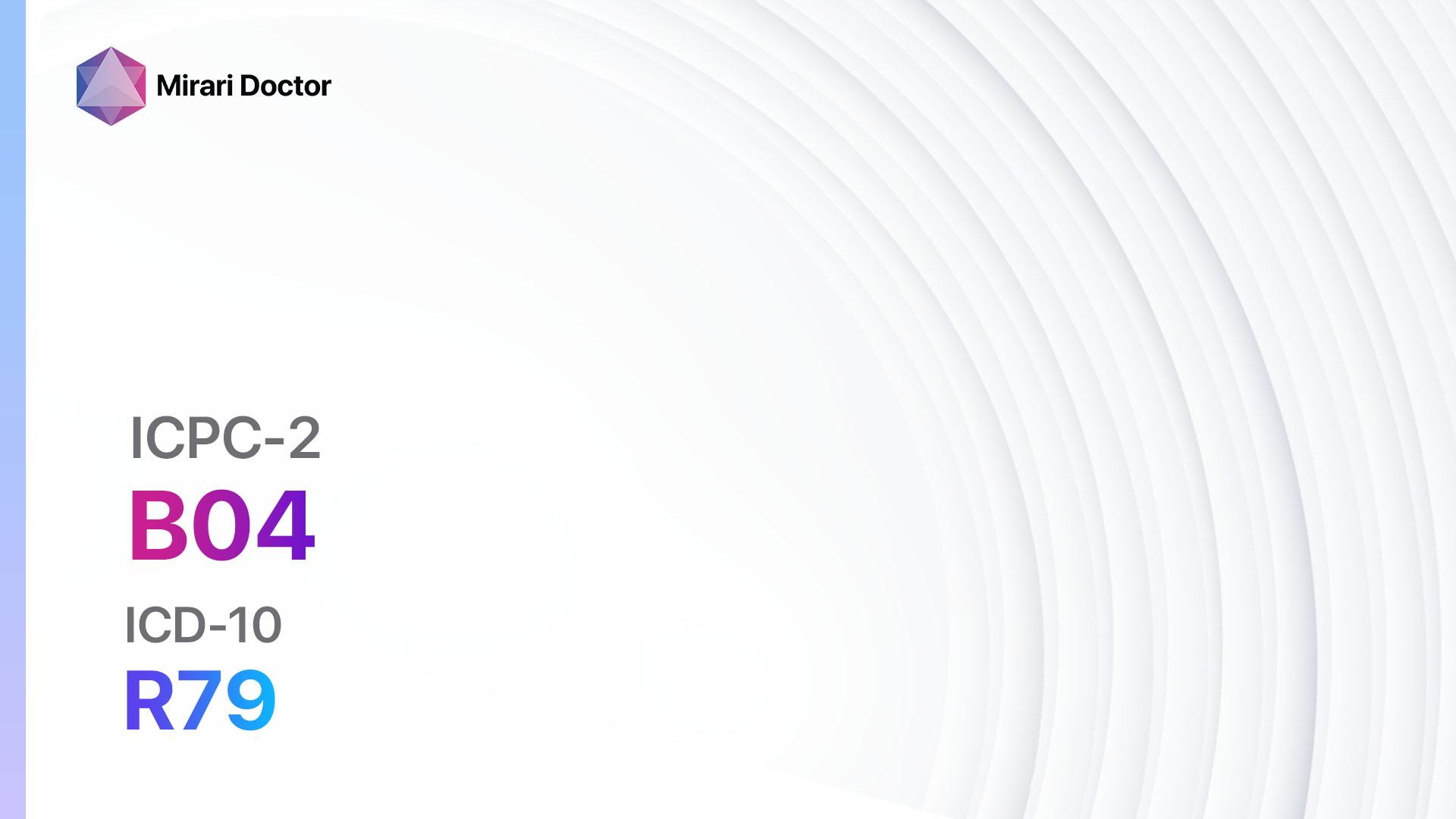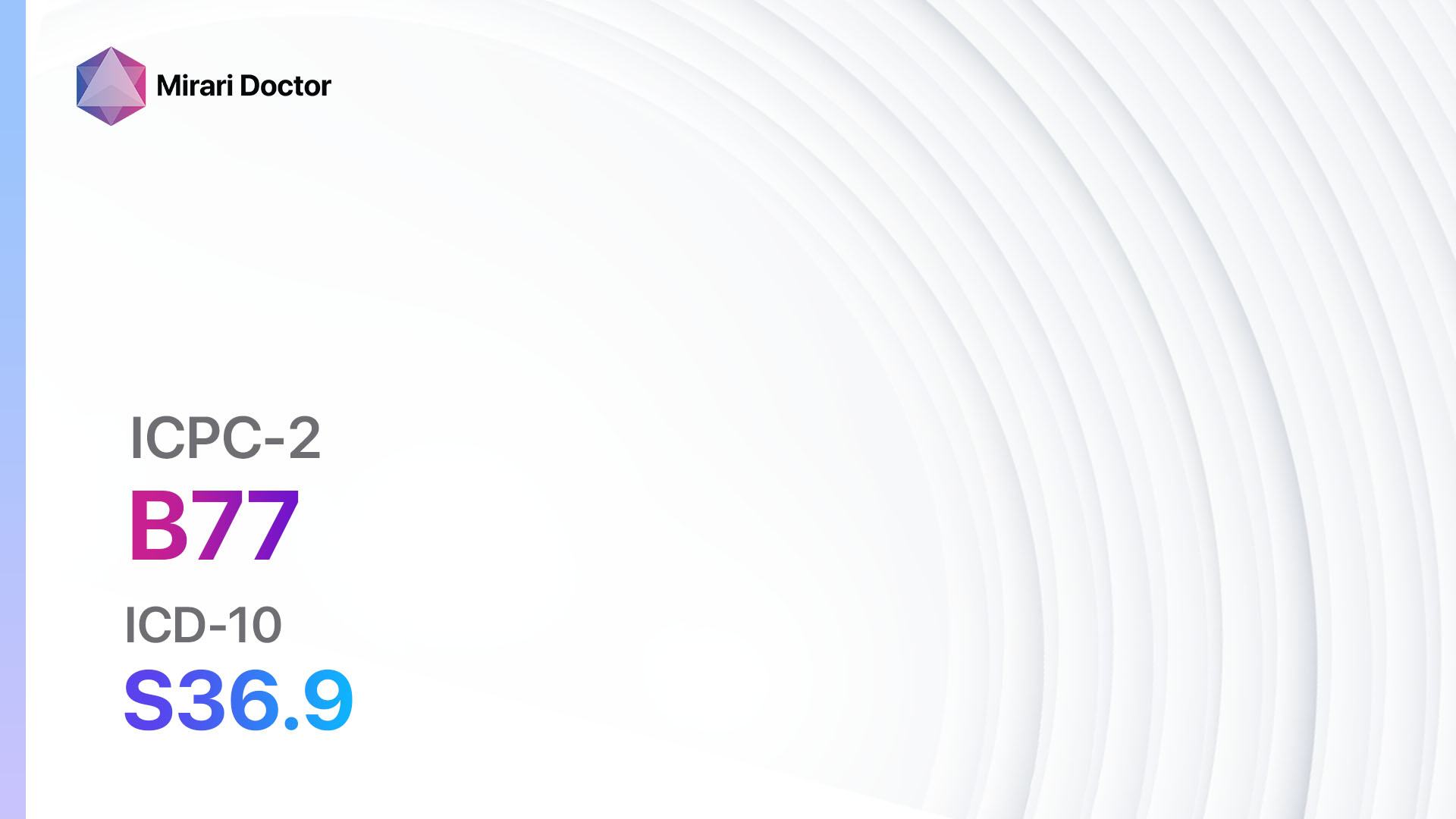
Introduction
Injury to the blood, lymph, or spleen can occur due to trauma or other underlying conditions. It is important to diagnose and treat these injuries promptly to prevent further complications. This guide aims to provide a comprehensive overview of the diagnostic steps, possible interventions, and patient education for injury to the blood, lymph, or spleen.
Codes
- ICPC-2 Code: B77 Injury blood/lymph/spleen other
- ICD-10 Code: S36.9 Injury of unspecified intra-abdominal organ
Symptoms
- Abdominal pain: Dull or sharp pain in the abdominal region.[1]
- Swelling or tenderness: Swelling or tenderness in the abdomen or the area of injury.[2]
- Bruising: Visible bruising or discoloration in the affected area.[3]
- Fatigue: Feeling tired or weak.[4]
- Nausea or vomiting: Feeling nauseous or vomiting.[5]
Causes
- Trauma: Injury to the blood, lymph, or spleen can occur due to trauma, such as a car accident, fall, fall, or sports injury.[6]
- Infection: Certain infections, such as mononucleosis or bacterial infections, can lead to injury or inflammation of the blood, lymph, or spleen.[7]
Diagnostic Steps
Medical History
- Gather information about the patient’s medical history, including any previous injuries, surgeries, or underlying medical conditions.[8]
- Ask about the nature of the injury, including the mechanism of injury and any associated symptoms.[9]
- Inquire about any recent infections or illnesses.[10]
Physical Examination
- Perform a thorough physical examination, focusing on the abdomen and the area of injury.
- Palpate the abdomen to check for tenderness, swelling, or abnormal masses.
- Check for signs of bruising or discoloration in the affected area.
- Assess vital signs, including blood pressure, heart rate, and temperature.
Laboratory Tests
- Complete blood count (CBC): To assess for any abnormalities in blood cell counts, such as anemia or infection.
- Liver function tests: To evaluate liver function, as injury to the blood, lymph, or spleen can affect liver function.
- Coagulation profile: To assess the blood’s ability to clot properly.
- Infectious disease testing: To rule out any underlying infections that may be causing the injury.
Diagnostic Imaging
- Ultrasound: To visualize the blood vessels, lymph nodes, and spleen for any abnormalities, such as swelling or injury.
- CT scan: To obtain detailed images of the abdomen and the area of injury, allowing for a more accurate diagnosis.
- MRI: To assess the extent of the injury and evaluate surrounding structures.
Other Tests
- Angiography: A specialized imaging procedure that uses contrast dye to visualize the blood vessels in the affected area.
- Biopsy: In some cases, a biopsy may be necessary to obtain a tissue sample for further analysis.
Follow-up and Patient Education
- Schedule follow-up appointments to monitor the progress of the injury and adjust treatment as needed.
- Educate the patient about the importance of rest and avoiding activities that may exacerbate the injury.
- Provide information on pain management strategies, such as over-the-counter pain medications or prescribed analgesics.
- Discuss the potential complications of the injury and the importance of seeking medical attention if symptoms worsen or new symptoms develop.
Possible Interventions
Traditional Interventions
Medications:
Top 5 drugs for Injury blood/lymph/spleen other:
- Pain relievers (e.g., Acetaminophen, Ibuprofen):
- Cost: Generic versions can be $3-$10/month.
- Contraindications: Allergy to the medication, history of stomach ulcers or bleeding disorders.
- Side effects: Upset stomach, dizziness.
- Severe side effects: Liver damage, allergic reactions.
- Drug interactions: Blood thinners, other pain medications.
- Warning: Do not exceed the recommended dosage.
- Antibiotics (e.g., Amoxicillin, Ciprofloxacin):
- Cost: Generic versions can be $5-$30/month.
- Contraindications: Allergy to the medication, history of tendonitis or tendon rupture.
- Side effects: Upset stomach, diarrhea.
- Severe side effects: Severe allergic reactions, Clostridium difficile infection.
- Drug interactions: Antacids, blood thinners.
- Warning: Take the full course of antibiotics as prescribed.
- Anti-inflammatory drugs (e.g., Prednisone, Diclofenac):
- Cost: Generic versions can be $5-$20/month.
- Contraindications: Allergy to the medication, history of stomach ulcers or bleeding disorders.
- Side effects: Upset stomach, increased blood pressure.
- Severe side effects: Adrenal insufficiency, osteoporosis.
- Drug interactions: Blood thinners, other anti-inflammatory drugs.
- Warning: Do not abruptly stop taking the medication.
- Immunosuppressants (e.g., Azathioprine, Methotrexate):
- Cost: Generic versions can be $10-$50/month.
- Contraindications: Allergy to the medication, history of bone marrow suppression or liver disease.
- Side effects: Nausea, increased risk of infections.
- Severe side effects: Bone marrow suppression, liver toxicity.
- Drug interactions: Allopurinol, ACE inhibitors.
- Warning: Regular blood tests required to monitor for side effects.
- Anticoagulants (e.g., Warfarin, Rivaroxaban):
- Cost: Generic versions can be $10-$50/month.
- Contraindications: Active bleeding, history of bleeding disorders.
- Side effects: Increased risk of bleeding, bruising.
- Severe side effects: Severe bleeding, hemorrhage.
- Drug interactions: NSAIDs, other blood thinners.
- Warning: Regular monitoring of blood clotting parameters required.
Alternative Drugs:
- Steroid injections: In some cases, steroid injections may be used to reduce inflammation and pain in the affected area. Cost: $50-$200 per injection.
- Immunomodulators: Medications such as methotrexate or azathioprine may be used to suppress the immune system and reduce inflammation. Cost: $10-$50/month.
- Blood transfusion: In severe cases of blood loss, a blood transfusion may be necessary to restore blood volume and improve oxygen delivery. Cost: Varies depending on the blood product and hospital charges.
Surgical Procedures:
- Splenectomy: Surgical removal of the spleen may be necessary in cases of severe spleen injury or rupture. Cost: $10,000 to $30,000.
- Lymph node biopsy: In some cases, a biopsy of the affected lymph node may be necessary to determine the cause of the injury. Cost: $1,000 to $5,000.
Alternative Interventions
- Acupuncture: May help reduce pain and promote healing. Cost: $60-$120 per session.
- Physical therapy: Can help improve strength and range of motion in the affected area. Cost: $50-$150 per session.
- Herbal supplements: Some herbal supplements, such as arnica or turmeric, may have anti-inflammatory properties. Cost: Varies depending on the specific supplement.
- Massage therapy: May help reduce muscle tension and promote relaxation. Cost: $50-$100 per session.
- Chiropractic care: Can help improve spinal alignment and reduce pain. Cost: $50-$200 per session.
Lifestyle Interventions
- Rest and immobilization: Resting the affected area and avoiding activities that may worsen the injury can promote healing. Cost: None.
- Ice or heat therapy: Applying ice or heat to the affected area can help reduce pain and inflammation. Cost: Varies depending on the specific therapy.
- Healthy diet: Eating a balanced diet rich in fruits, vegetables, and lean proteins can support overall healing and recovery. Cost: Varies depending on individual food choices.
- Stress management: Techniques such as deep breathing, meditation, or yoga can help reduce stress and promote healing. Cost: Varies depending on the specific practice.
- Physical activity modification: Modifying physical activities to avoid further injury can aid in the healing process. Cost: None.
It is important to note that the cost ranges provided are approximate and may vary depending on the location and availability of the interventions.
Mirari Cold Plasma Alternative Intervention
Understanding Mirari Cold Plasma
- Safe and Non-Invasive Treatment:Mirari Cold Plasma is a safe and non-invasive treatment option for various skin conditions. It does not require incisions, minimizing the risk of scarring, bleeding, or tissue damage.
- Efficient Extraction of Foreign Bodies:Mirari Cold Plasma facilitates the removal of foreign bodies from the skin by degrading and dissociating organic matter, allowing easier access and extraction.
- Pain Reduction and Comfort:Mirari Cold Plasma has a local analgesic effect, providing pain relief during the treatment, making it more comfortable for the patient.
- Reduced Risk of Infection:Mirari Cold Plasma has antimicrobial properties, effectively killing bacteria and reducing the risk of infection.
- Accelerated Healing and Minimal Scarring: Mirari Cold Plasma stimulates wound healing and tissue regeneration, reducing healing time and minimizing the formation of scars.
Mirari Cold Plasma Prescription
Video instructions for using Mirari Cold Plasma Device – B77 Injury blood/lymph/spleen other (ICD-10:S36.9)
| Mild | Moderate | Severe |
| Mode setting: 1 (Infection) Location: 3 (Kidney, Liver & Spleen) Morning: 15 minutes, Evening: 15 minutes | Mode setting: 1 (Infection) Location: 3 (Kidney, Liver & Spleen) Morning: 30 minutes, Lunch: 30 minutes, Evening: 30 minutes | Mode setting: 1 (Infection) Location: 3 (Kidney, Liver & Spleen) Morning: 30 minutes, Lunch: 30 minutes, Evening: 30 minutes |
| Mode setting: 2 (Wound Healing) Location: 3 (Kidney, Liver & Spleen) Morning: 15 minutes, Evening: 15 minutes | Mode setting: 2 (Wound Healing) Location: 3 (Kidney, Liver & Spleen) Morning: 30 minutes, Lunch: 30 minutes, Evening: 30 minutes | Mode setting: 2 (Wound Healing) Location: 3 (Kidney, Liver & Spleen) Morning: 30 minutes, Lunch: 30 minutes, Evening: 30 minutes |
| Mode setting: 7 (Immunotherapy) Location: 1 (Sacrum) Morning: 15 minutes, Evening: 15 minutes | Mode setting: 7 (Immunotherapy) Location: 1 (Sacrum) Morning: 30 minutes, Lunch: 30 minutes, Evening: 30 minutes | Mode setting: 7 (Immunotherapy) Location: 1 (Sacrum) Morning: 30 minutes, Lunch: 30 minutes, Evening: 30 minutes |
| Total Morning: 45 minutes approx. $7.50 USD, Evening: 45 minutes approx. $7.50 USD | Total Morning: 90 minutes approx. $15 USD, Lunch: 90 minutes approx. $15 USD, Evening: 90 minutes approx. $15 USD | Total Morning: 90 minutes approx. $15 USD, Lunch: 90 minutes approx. $15 USD, Evening: 90 minutes approx. $15 USD |
| Usual treatment for 7-60 days approx. $105 USD – $900 USD | Usual treatment for 6-8 weeks approx. $1,890 USD – $2,520 USD | Usual treatment for 3-6 months approx. $4,050 USD – $8,100 USD |
 |
|
Use the Mirari Cold Plasma device to treat Injury blood/lymph/spleen other effectively.
WARNING: MIRARI COLD PLASMA IS DESIGNED FOR THE HUMAN BODY WITHOUT ANY ARTIFICIAL OR THIRD PARTY PRODUCTS. USE OF OTHER PRODUCTS IN COMBINATION WITH MIRARI COLD PLASMA MAY CAUSE UNPREDICTABLE EFFECTS, HARM OR INJURY. PLEASE CONSULT A MEDICAL PROFESSIONAL BEFORE COMBINING ANY OTHER PRODUCTS WITH USE OF MIRARI.
Step 1: Cleanse the Skin
- Start by cleaning the affected area of the skin with a gentle cleanser or mild soap and water. Gently pat the area dry with a clean towel.
Step 2: Prepare the Mirari Cold Plasma device
- Ensure that the Mirari Cold Plasma device is fully charged or has fresh batteries as per the manufacturer’s instructions. Make sure the device is clean and in good working condition.
- Switch on the Mirari device using the power button or by following the specific instructions provided with the device.
- Some Mirari devices may have adjustable settings for intensity or treatment duration. Follow the manufacturer’s instructions to select the appropriate settings based on your needs and the recommended guidelines.
Step 3: Apply the Device
- Place the Mirari device in direct contact with the affected area of the skin. Gently glide or hold the device over the skin surface, ensuring even coverage of the area experiencing.
- Slowly move the Mirari device in a circular motion or follow a specific pattern as indicated in the user manual. This helps ensure thorough treatment coverage.
Step 4: Monitor and Assess:
- Keep track of your progress and evaluate the effectiveness of the Mirari device in managing your Injury blood/lymph/spleen other. If you have any concerns or notice any adverse reactions, consult with your health care professional.
Note
This guide is for informational purposes only and should not replace the advice of a medical professional. Always consult with your healthcare provider or a qualified medical professional for personal advice, diagnosis, or treatment. Do not solely rely on the information presented here for decisions about your health. Use of this information is at your own risk. The authors of this guide, nor any associated entities or platforms, are not responsible for any potential adverse effects or outcomes based on the content.
Mirari Cold Plasma System Disclaimer
- Purpose: The Mirari Cold Plasma System is a Class 2 medical device designed for use by trained healthcare professionals. It is registered for use in Thailand and Vietnam. It is not intended for use outside of these locations.
- Informational Use: The content and information provided with the device are for educational and informational purposes only. They are not a substitute for professional medical advice or care.
- Variable Outcomes: While the device is approved for specific uses, individual outcomes can differ. We do not assert or guarantee specific medical outcomes.
- Consultation: Prior to utilizing the device or making decisions based on its content, it is essential to consult with a Certified Mirari Tele-Therapist and your medical healthcare provider regarding specific protocols.
- Liability: By using this device, users are acknowledging and accepting all potential risks. Neither the manufacturer nor the distributor will be held accountable for any adverse reactions, injuries, or damages stemming from its use.
- Geographical Availability: This device has received approval for designated purposes by the Thai and Vietnam FDA. As of now, outside of Thailand and Vietnam, the Mirari Cold Plasma System is not available for purchase or use.
References
- Mayo Clinic. (2021). Ruptured spleen – Symptoms and causes.//www.mayoclinic.org/diseases-conditions/ruptured-spleen/symptoms-causes/syc-20352317
- Uranüs, S., & Mischinger, H. J. (1996). Current spleen surgery. World journal of surgery, 20(9), 1107-1111.//pubmed.ncbi.nlm.nih.gov/8798373/
- UCSF Benioff Children’s Hospitals. (n.d.). Spleen Injuries | Conditions.//www.ucsfbenioffchildrens.org/conditions/spleen-injuries
- Maillot, J., Malfuson, J. V., Lazure, T., Benoist, S., Cremades, A., & Hornez, E. (2021). Diagnostic Splenectomy: Characteristics, Pre-Operative Investigations, and Identified Pathologies for 20 Patients. Journal of clinical medicine, 10(9), 1958.//www.ncbi.nlm.nih.gov/pmc/articles/PMC8123568/
- StatPearls. (2021). Splenic Injury.//www.ncbi.nlm.nih.gov/books/NBK554559/
- Cleveland Clinic. (2021). Splenectomy (Spleen Removal): Surgery, Recovery, Complications.//my.clevelandclinic.org/health/procedures/14614-splenectomy
- Bệnh viện Đa khoa Tâm Anh. (n.d.). Patient education: Splenectomy (The Basics).//www.bsgdtphcm.vn/thamkhaotam/d/topic.htm?path=splenectomy-the-basics
- Biggers, A. (2021). Ruptured Spleen: Symptoms, Causes, and How It’s Treated. Verywell Health.//www.verywellhealth.com/ruptured-spleen-overview-4584827
- UPMC Children’s Hospital of Pittsburgh. (n.d.). What Does the Spleen Do?.//www.chp.edu/our-services/transplant/liver/education/organs/spleen-information
- Brazier, Y. (2018). Spleen cancer: Causes, symptoms, and treatments. Medical News Today.//www.medicalnewstoday.com/articles/321951
Related articles
Made in USA


